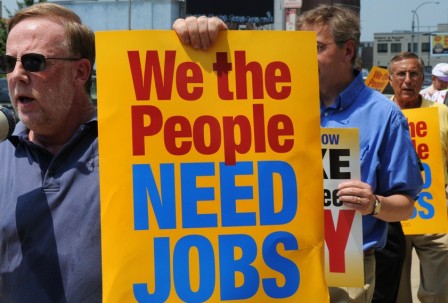
The official July unemployment rate of 6.2 percent released last weekend by the Bureau of Labor Statistics greatly understates both the actual joblessness rate and the extent of suffering it is causing.
Just under a third (32.0 percent) have been jobless for more than half a year and have lost their unemployment benefits altogether. The benefits came to an end last Dec. 28 and have been blocked by Senate Republican filibusters ever since then.
While 131,000 people found jobs last month, according to the Bureau of Labor Statistics report, the number of unemployed people rose last month by 197,000 to 9.67 million.
While the official jobless rate is 6.2 percent, one of every eight workers (12.2 percent) are unemployed or toiling at part-time work even though they want full-time jobs. Then there are millions who are so discouraged they’ve dropped out of searching for jobs entirely and millions of others who have never had their first job.
Companies reported adding jobs, however, in both high-paying – construction and manufacturing – and low-paying economic sectors. Factories said they added 28,000 jobs in July, with half of those in cars and parts. Construction added 22,000, at the height of the construction season, and despite the problems facing road-building and bridge repairs due to lack of federal funds.
Construction firms reported adding almost two-thirds of their jobs in specialty construction, with 6.041 million workers toiling in July. But that still left 666,000 construction workers, or 7.5 percent unemployed, BLS said. Construction union leaders say that understates the jobless rate in that sector, since a worker toiling even one day during the survey week is counted as employed for the whole month.
Factories now employ 12.16 million workers, leaving 825,000 (5.2 percent) jobless. Other than cars and parts, there were small gains and losses in all other factories.
On the other hand, retail trade added 26,700 jobs last month, health care added 21,000 jobs and bars and restaurants added 18,600 jobs. Retail trade, the lowest-paying sector of the economy, now employs 3.7 million more people than factories do.
Governments added 11,000 jobs, the Labor Department added. Seasonally adjusted, almost all of that gain was in local government, not including the schools.
Photo: AP












Comments